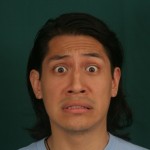 Body language, unlike one of the seven facial expressions of emotion, is not universal. In fact, research has shown that it is culture specific.
Body language, unlike one of the seven facial expressions of emotion, is not universal. In fact, research has shown that it is culture specific.
myGuidon.com writes that many of our body movements and gestures are culturally determined, some gestures have different meanings in different cultures. What can be seen in one culture as a compliment is often taken as an insult in another culture.
With our internationally connected world it is important for the business traveler, teacher, psychologist, doctor etc. to understand that one culture’s set of acceptable body language gestures or movements may not be interpreted the same way in a different culture.
One can simply look at the greeting style of various cultures to see this cultural discord come to life. There are huge differences between the way Americans, Asians, and Middle Eastern people greet each other.
When dealing with cultural differences or a difficult cultural encounter Knowledge Is the Key!
Humintell’s IntelliCulture has a section devoted to gestures of different cultures and what they mean. If you encounter individuals from varying cultural backgrounds, you would benefit from this cross-cultural adaptation tool.
To read more about gestures and how they are received in varying countries read the entire article.
Use Coupon Code: COMP15 to receive 15% off your IntelliCulture purchase.
 We’ve all either have told someone or have been told by someone that “this is not personal it’s business”. The concept of keeping personal stuff personal and work stuff at the workplace is now becoming a thing of the past.
We’ve all either have told someone or have been told by someone that “this is not personal it’s business”. The concept of keeping personal stuff personal and work stuff at the workplace is now becoming a thing of the past. Scientists have been studying fear for quite some time and it is a fact that you can be “scared to death”. NPR has reported on the phenomenon of Voodoo Death as doctors refer to it.
Scientists have been studying fear for quite some time and it is a fact that you can be “scared to death”. NPR has reported on the phenomenon of Voodoo Death as doctors refer to it.